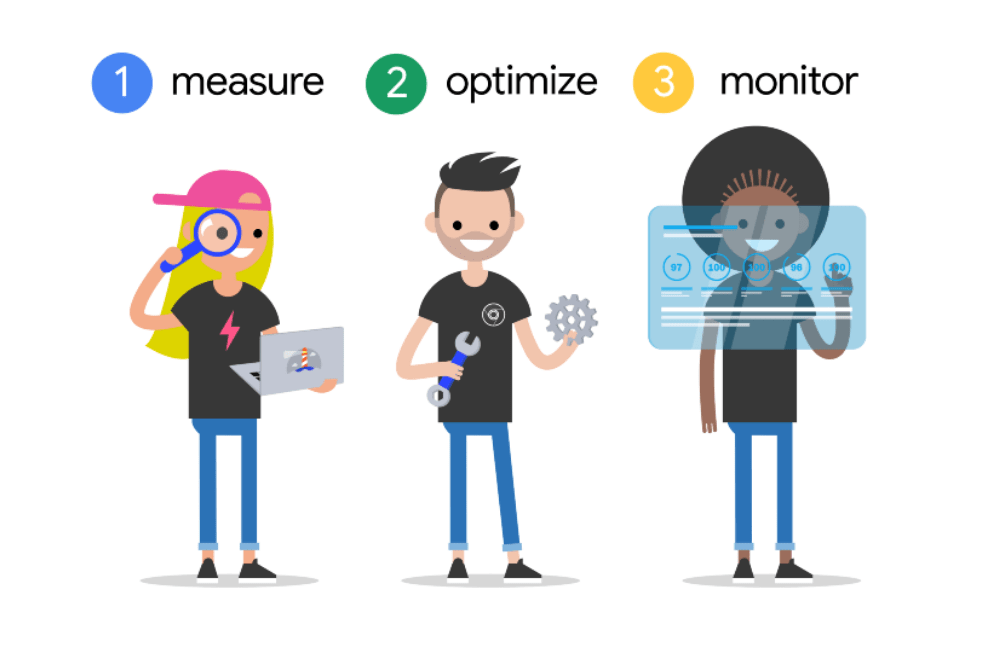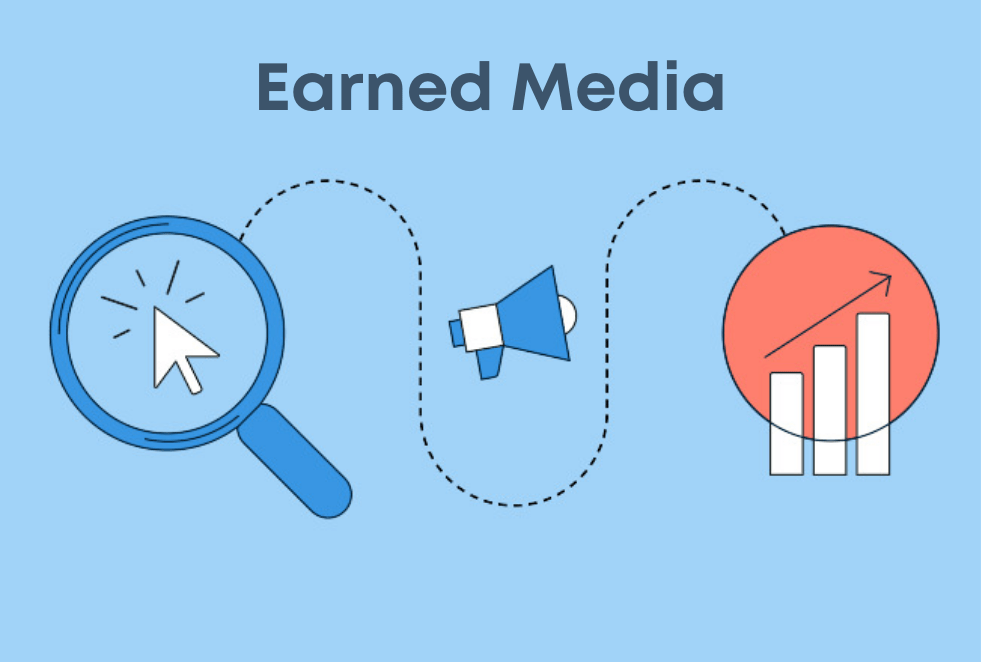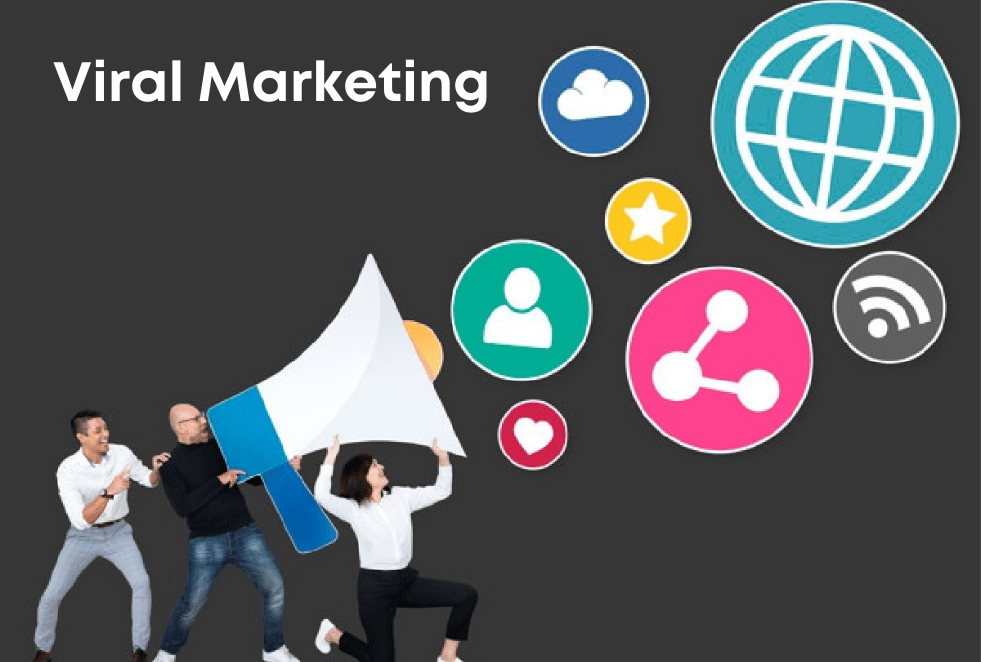Social Media Marketing (SMM)
What Is Social Media Marketing (SMM)?
Social media marketing (SMM), also called digital marketing and e-marketing, is the use of social media platforms, where people build social networks and share information, to build a company’s brand, increase sales, and drive traffic to its website. Social media marketing (SMM) gives companies a way to interact with their current customers and find new ones. It also has built-in data analytics that help marketers track the success of their efforts and find even more ways to interact.

5 pillars of social media marketing
When making marketing plans, one of the most important things marketers think about is how to get their message across. Social media makes it easier to get these messages to the right people at the right time, both for free and for a fee. Social media also lets brands find out more about the personal, geographical, and demographic details of their audience. This lets organisations change their messages and content to get more people interested.
A good social media marketing approach will be built on five pillars.

For every marketing campaign or activity, a good plan should be made ahead of time. Organizations need to decide what the program’s goals are, what channels will be used, and what kinds of content will be shared. Here are some examples:
- Determine goals. When you use social media for marketing, your goals should be close to those of your business and other marketing goals.
- Choose which social media sites to use. There are a lot of social platforms out there, but businesses don’t need to use them all.
- Content mix. Each social platform has its own way to share content, such as through video, pictures, links, and direct messages.
Planning and publishing
After coming up with a plan, it’s time to start publishing. This can be as easy as putting up a new blog post, telling people about an upcoming event, or putting up a new video about a product. But the key to a good SMM program is to be consistent. Organizations should post on their page often to build a following. Regularly posting useful content will keep people coming back for more. The content that businesses share on social media should be in line with their other marketing efforts. Marketers can schedule their posts to go out at the right time with tools like Hootsuite, HubSpot, and Sprout Social.


Listening and engagement
When a business creates activity on social platforms, the number of people talking about the brand and products can go up. Users will comment on and share posts, tag the company in their own posts, and even start talking to each other through the instant messaging features. There are alerts set up to let social media managers know about these kinds of interactions, which is great. This lets them give good customer service, which in turn makes the experience better for the customer.
People can also talk about a brand, product, or service on social media without tagging the company or talking to them directly. There are a number of social media listening tools, such as Brand watch, Net Base Quid, and Sprinkler, that you can use to stay in the loop. Google Alerts and other free tools can also let marketers know when their company is talked about.
Analytics and reporting
It’s critical to monitor its performance as additional material is added and the audience expands. You might inquire about the following:
- Which posts are being talked about the most?
- Where do people who like a brand come from?
Any marketing program’s success depends on the data and analytics it produces. With this information, a marketing team can make better decisions about future campaigns and focus on what works. Each social platform has its own analytics data, but there are other tools that can pull data from many channels into one place. This lets marketers figure out how well their marketing campaigns are doing overall.


Advertising
A lot of social media marketing is free, but you may need to spend time and money on tools and resources. Marketing goals can be met by building an audience and posting content on free social media sites. However, as the program grows, so does the budget. Paid marketing tools can be very helpful for businesses. They can show ads to specific groups of people based on many things, such as demographic information, retargeting, and how people act.
There are tools that make it easier to manage a lot of social media marketing, but to start, all you need to do is use the native ads feature to promote posts, get leads, and make sure messages reach the right people.
Advantages and Disadvantages of Social Media Marketing
Social media marketing is now part of the sales and marketing plan for every company. It gives you another way to get your content and messages out to a much bigger audience than a homegrown list of contacts. There are some good things about starting a social media marketing programmer, but there are also some bad things.
Advantages of social media marketing
Improved customer satisfaction
Organizations don’t just use social media to market to customers; they also talk to them there. This can improve customer service and help people get to know each other better.
Reach a wider audience
Across all social media, there are more than 3.6 billion users. A single post share can help a brand get seen by a lot more people.
Cost-effective tool
The cost of managing a social media programme can be low if it is done right. Once the marketing team has the knowledge, team, and programme strategy in place, it’s easy to use and doesn’t cost much
Increase website traffic
Social posts are a great way to get people to visit a brand’s website again and again. By promoting blog posts, landing page offers, and other things, a brand can get people to click through and interact with it more.
Gain better insights
By using the analytics and reporting tools on each social media platform, you can find out who follows your page, what kind of content they like, and how they like to interact with a brand.
Disadvantages of social media marketing
Time-consuming process
To make sure that social media campaigns work, a lot of time can be spent on them. Marketing teams also have to add new content to the calendar and answer questions all the time. This can make it hard for small marketing teams to use all of SMM’s features.
Competitor’s market research
When you post on social media, you’re putting it out there for everyone to see, including your competitors. There’s no way to get around this.
Need qualified resources
To run a social media marketing programme, you need the right person or team. Social media marketing programmes don’t need people who are just starting out. Instead, the key is to find skilled and experienced social media marketers.
Have to wait to see ROI
SMM is an investment for the long term. Social media platforms have a high return on investment, but you won’t see results right away. The success of a social media marketing (SMM) programme isn’t based on one piece of content, but on many pieces of content over long periods of time.
Brand reputation is vulnerable
SMM can cause a brand to get bad press and make people feel bad about it. Customers who vent their frustrations on social media can leave a lot of bad reviews. Because the platforms are public, everything a business says or does will be seen and responded to. To reduce this risk, brands should speed up their response times.
The best way to develop a social media marketing plan
Here are the steps a business needs to take to make a good social media marketing plan
1. Identify social media goals that align with the business goals
Start by making goals that will show you how to use social media and give you a point of reference for data. Use the SMART goal format to figure out what you can really do. The following are examples of goals:
- bring more people to a website
- drive more leads
- earn more money
- grow audience


2. Research and define the target audience
It’s important for a business to know who its customers are, what they care about, and why they need its products or services. Social media platforms have a lot of information about their users, so this task doesn’t need a big market research project. Knowing who follows the social channel and what their demographics are good places to start.
It’s also important to know that different platforms attract different kinds of users. When a company knows what social channels their customers use, they can choose which ones to put time and money into.
3. Perform a competitive assessment
When marketing teams know what the competition is doing, they can figure out what is working for them and what isn’t. This gives information about the industry as well as chances to get a product or message out there.
Brands can also use social listening tools to set up different monitoring streams for content from competitors and keywords related to their industry.


4. Create and curate relevant content for the channel
Knowing the goals, the audience, and the competition will help brands figure out what kind(s) of content they need to make. Different types of content and media can be interesting. It can be made by the company or gathered from other places to share industry news or other pieces that show thought leadership.
Businesses should post content often and consistently if they want to build a group of engaged followers. Brands can put up promotions to get more people interested. They can also make posts that make the organization seem more friendly and real.
5. Be timely with posts and responses
The best time for a business to post isn’t always the best time for customers. Analytics can tell you when the best times are to post for engagement so you can make the most of them. Then, organizations can use publishing tools to schedule posts ahead of time. Since news moves quickly, it’s also important that the content is up-to-date.
Response time is another part of being on time on social media. Customers also expect a quick response when they talk to a brand on social media. Through these one-on-one relationships, a brand can build trust and authority with its customers.


6. Gain buy-in and support from others in the organization
The marketing department of an organisation needs to work with other departments and stakeholders. Marketing can learn a lot from sales to improve its social campaigns, but sales can also use marketing’s reach to their advantage. Sales and marketing that work well together is great, but you also need support from senior stakeholders.
A strong social media programme will often help other departments with their work. Every department in a company can benefit from social support, but HR is usually the next best place to work with. Social media can be used to find new employees and build a company’s brand.
7. Measure and optimize
The last step in making a social media marketing plan that works is to find out what works and what doesn’t. The following should be watched by organisations:
- posts that get top engagement;
- buyers who keep coming back; and
- ads that bring in the most money
How does Social Media Marketing Work?
As platforms like Facebook, Twitter, and Instagram grew in popularity, social media changed not only how we talk to each other but also how businesses can change how people act, such as by promoting content that gets people to interact and by getting geographic, demographic, and personal information about users that makes their messages more effective.
SMM Action Plan
Your social media marketing (SMM) plan will work better if it is more targeted. Hootsuite, a top social media management software company, suggests the following steps to build an SMM campaign with a framework for how it will be run and metrics for how well it is doing
Find out who you want to sell to (age, location, income, job title, industry, interests).
Align your SMM goals with your clear business goals.
Do an analysis of what your competitors are doing (successes and failures).
Audit your current SMM (successes and failures).
Set up a schedule for the delivery of SMM content.
Make the best content you can
Customer Relationship Management (CRM)
Compared to traditional marketing, social media marketing has a number of advantages. One of these is that it has two types of interactions that make it possible to use targeted customer relationship management (CRM) tools: customer-to-customer and firm-to-customer. In other words, traditional marketing measures customer value mostly by how much they spend, but SMM can measure customer value both directly (through purchases) and indirectly (by how much they spend) (through product referrals).


Shareable Content
Because SMM makes connections between people stronger, businesses can also use it to make “sticky” content, which is the marketing term for interesting content that hooks customers at first glance, get them to buy products, and then makes them want to share it. This kind of word-of-mouth advertising not only reaches people you wouldn’t normally be able to reach, but it also comes with the implicit endorsement of someone the recipient knows and trusts. This is why making content that people want to share is one of the most important ways that social media marketing helps businesses grow.
Earned Media
Social media marketing (SMM) is also the best way for a business to take advantage of another type of earned media: customer-made product reviews and recommendations. Earned media is a term for brand exposure from any method other than paid advertising.
Viral Marketing
SMM strategy that relies on the audience to spread the message. It is a sales method that tries to make product information spread quickly through word-of-mouth. When a marketing message spreads to people outside of its original target audience, it is said to have gone viral. This is a very easy and inexpensive way to boost sales.
Customer Segmentation
Social media marketing (SMM) makes customer segmentation much more precise than traditional marketing channels, so companies can be sure to focus their marketing resources on their exact target audiences.
Social Media Marketing (SMM) techniques
The first method involves making official pages and groups for a brand’s promotion (company). Subscribers talk about the company and its products and invite other people to join the group. People who have signed up can go to the company’s official website, read it, and then buy something.
You should always draw attention to the site and make it stand out. This can be done with words, pictures, and sayings.
Every social network has a different group of users. If you look at the most popular social networks, you can say that Facebook is for younger people, Linkedin is for business people, Instagram is for promoting women’s products.
he second method is to talk to and work with bloggers and people who run different communities. This is done when the business partner talks about the company’s brand and resources as a way to connect to it.
The third way is to keep your reputation in good shape. It is important to keep track of what people say about the company. If the reviews are bad, it is very important to smooth them out and show the critic how unique the goods are.
The fourth is making your own app, which anyone can download and use to find out a lot of interesting information. These have information about the company and its products that is not very important but is nice to know.
FAQs
Sticky content is a marketing term for interesting content that catches people’s attention at first glance and makes them want to buy products or share the content.
Viral marketing is a type of social media marketing (SMM) that tries to speed up the spread of word-of-mouth about a product. It’s a simple and cheap way to boost sales.
Social media are the websites that let people connect, share, and publish their own thoughts online. It lets news, videos, and other important information spread quickly to a large number of people in just a few seconds or even less time. Some social media websites are made for a large audience, while others are made for a small group of people. Most people use Facebook, Twitter, Linkedin, YouTube, blogs, forums, and there are many more.
Social media has two main uses: one is to get backlinks, and the other is to interact with customers. Some business studies on social media say that 93% of companies are on social media and that 85% of users think that these companies are actively interacting on social media. When used right, social media is a great way to connect potential customers with people who are already customers.
In fact, social media take up about 30% of all time spent online, and that number is growing. The best way to get in front of people is through social media. We can help you if you want brand awareness, sponsored content, or a mix of the two.
It’s hard to say exactly how much you should spend on social media marketing, but there are some limits on some platforms. For example, every day you advertise on Facebook, you need to spend at least $10. We don’t spend money on ads for every piece of content we post on social media, but when we do, we put at least $25 behind it. Most of the time, spending more will get you better results, but sometimes a little goes a long way. We suggest starting with a smaller budget and trying out different ads to find out what works best for your brand.
Most of the time, people on Social Media are looking for information. It’s not a place to sell things, but it does make it possible for sales to happen. If you set it up right, your social media will send more people to your websites.
A post is a piece of content that you share on social media so that your followers can find it on their own. An ad is a paid post that is meant to reach people who aren’t already your followers based on their demographics and interests. Most social media algorithms limit the number of followers who can naturally see your business’s posts. To make sure that more people see important or relevant posts, we recommend promoting them. A post that does well on its own is another great sign that it should be promoted. If it does well on its own, giving it money will help it reach more people.




